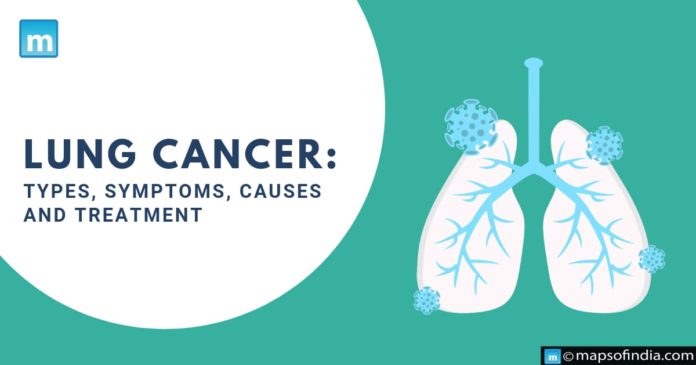Millions of people worldwide have lung cancer, a serious and potentially fatal condition. It is characterised by the unchecked proliferation of abnormal cells within the lungs, which, if not found and treated early, can damage lung function and spread to other parts of the body. Effective management and prevention of lung cancer depend on thoroughly understanding the many forms, symptoms, causes, and available treatments.
Types of Lung Cancer
There are two primary categories of lung cancer: non-small cell lung cancer (NSCLC) and small cell lung cancer (SCLC). These categories are further divided into subtypes, each with distinct characteristics.
Non-Small Cell Lung Cancer (NSCLC)
- Adenocarcinoma: This is the most prevalent subtype of lung cancer and frequently begins in the outer regions of the lungs. It frequently affects non-smokers and could be caused by genetic abnormalities. Coughing, tiredness, and shortness of breath are possible symptoms.
- Squamous cell carcinoma is frequently connected to smoking and typically starts in the bronchial tubes. Chest pain, a chronic cough, and frequent respiratory infections are examples of symptoms.
- Large Cell Carcinoma: This subtype is less frequent and has a quick growth and dissemination propensity. It may result in symptoms including a cough, chest pain, and coughing up blood and can start anywhere in the lungs.
Small Cell Lung Cancer (SCLC)
Though less frequent than NSCLC, small-cell lung cancer is more aggressive. By the time it is diagnosed, it is more likely to have spread to other parts of the body and is frequently linked to heavy smoking. Coughing, shortness of breath, exhaustion, and accidental weight loss are some symptoms that might occur.
Symptoms of Lung Cancer
While signs and symptoms of lung cancer might vary depending on the type and stage, some typical indicators include:
- ongoing cough
- chest discomfort
- Blood in the coughing
- Shortness of breath
- Fatigue
- Unwanted loss of weight
- Respiratory diseases that recur
- Hoarseness
Causes and Risk factors
Around 85% of lung cancer occurrences are attributable to tobacco use, which is the main cause of the disease. But even non-smokers are at risk for lung cancer because of asbestos, radon gas, secondhand smoke, environmental toxins, genetic susceptibility, and exposure to environmental pollutants. Additionally, particularly among non-smokers, some genetic abnormalities can raise the risk of lung cancer.
Treatment Options
The choice of lung cancer treatment depends on the patient’s type, stage, and overall health. Treatment modalities include:
- Surgery: Surgical removal of the tumor or the entire lung might be an option for early-stage lung cancer.
- Chemotherapy: This treatment uses drugs to kill cancer cells or stop their growth, and it is often used for both small and non-small cell lung cancer.
- Radiation Therapy: High-energy rays are used to target and destroy cancer cells. It can be used alone or in combination with surgery and chemotherapy.
- Targeted Therapy: This treatment targets specific genetic mutations in cancer cells, disrupting their growth signals.
- Immunotherapy: This approach boosts the body’s immune system to fight cancer cells more effectively.
- Palliative Care: For advanced cases, palliative care focuses on improving the patient’s quality of life and managing symptoms.




